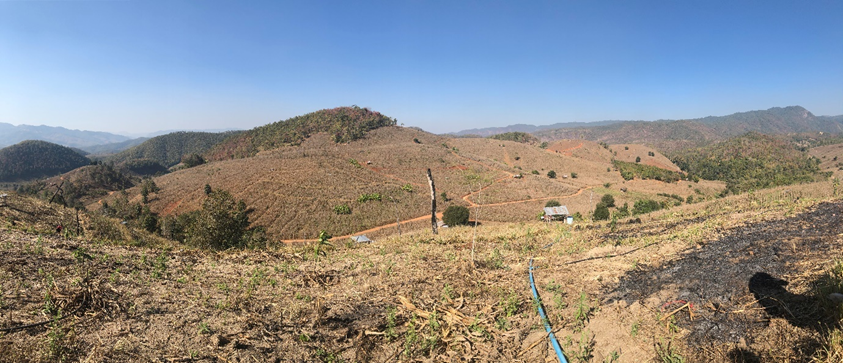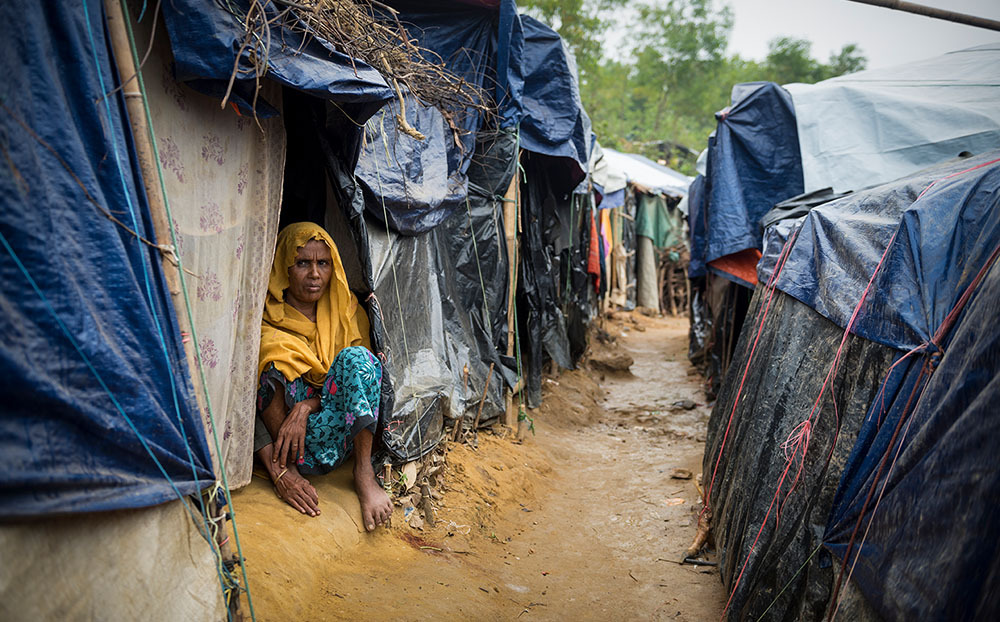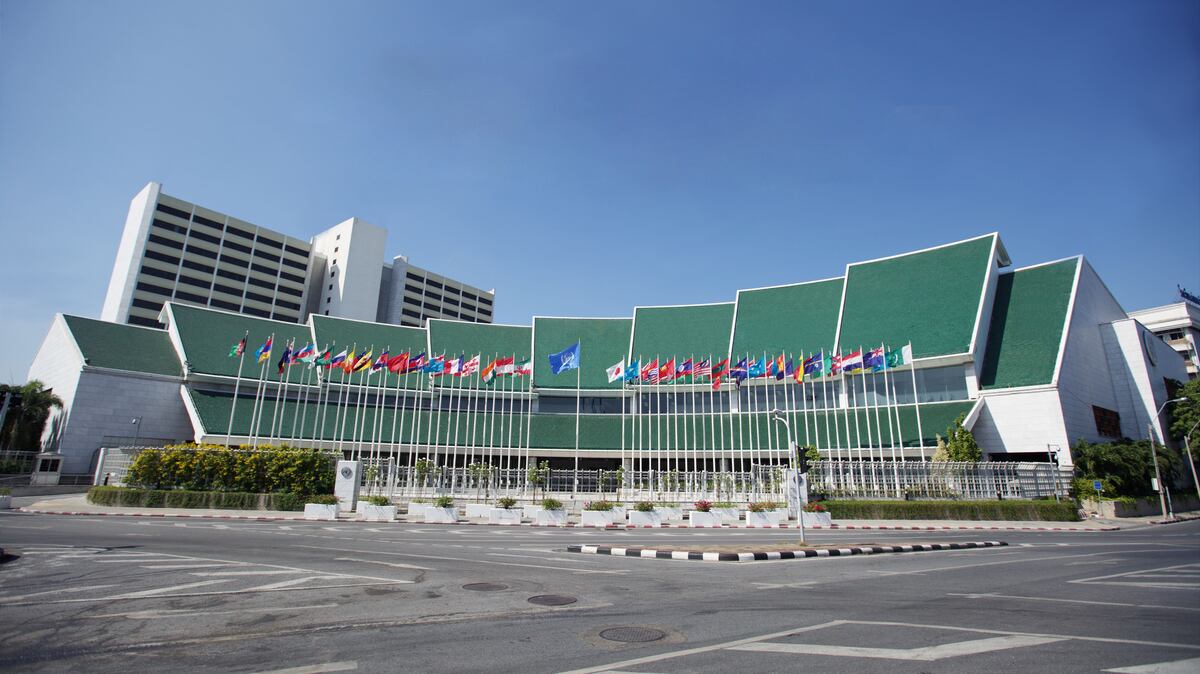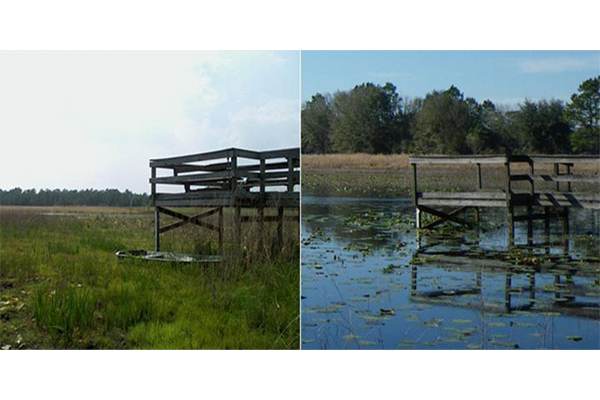
by Nakamura Shobokagaku Co., Ltd.
Issue
Thailand’s Chiang Mai Province suffers from massive forest fires. These fires have become more intense and extensive in recent years, negatively impacting ecosystems, endangering human assets, and depleting water sources. They also cause haze – hazardous smog that adversely affects human health and socioeconomic activities in the area, sometimes ranking Chiang Mai’s air quality among the world’s worst.
The Royal Forest Department, tasked with suppressing forest fires, struggles with accessing fire sources because of the mountainous terrain and dense forests. Firefighters typically trek for hours to the fires, carrying light, rudimentary tools such as hand pumps, bamboo blades, wind blowers, and back-loaded water dischargers.
Solution
Japanese manufacturer NAKAMURA SHOBOKAGAKU CO., LTD., supported by the Japanese International Cooperation Agency (JICA), assessed its portable multi-function pump for wildfire suppression in northern Thailand. The company identified improvements to enhance the pump’s technical capacity and apply it in urban areas, and it crafted a partnership plan with Chiang Mai Municipality to support its disaster management through knowledge-sharing and training.
Overview
Chiang Mai Province in northern Thailand has among the highest incidence of forest fires in the country, especially during the dry season (January to April). The fires result from natural combustion and humanmade causes, such as burning agricultural waste. These fires are especially hard to control because of dense terrain and the use of rudimentary firefighting equipment.
Supported by the Japanese International Cooperation Agency (JICA), Nakamura Shobokagaku, a Japanese company, assessed the use of its SYSCUE portable pump for firefighting in poorly accessible areas in Thailand. The company found the pump’s weight made it unsuitable for wildfire control, though it did have potential in urban areas, so it focused on technical improvements to adapt the pump to local needs. It also developed strategies to support Chiang Mai’s disaster management processes through training firefighters, disseminating knowledge, and standardizing portable pump usage.
Details
Chiang Mai Province in northern Thailand experiences some of the highest rates of forest fires in the country. The first occur mainly during the dry season from January to April and result from deliberate burning of fields to remove crop residues and grow mushrooms, as well as spontaneous combustion in forested areas with natural fuel, such as weeds, shrubs, and trees. In recent years, the region has received less precipitation and experienced higher temperatures, causing more intense, extensive, and longer-lasting fires.
The fires adversely impact ecosystems, land, and water resources and exacerbate public health issues due to air pollution from the smoke. Meanwhile, government and community efforts to suppress these fires are hindered by rugged terrain and unmanaged vegetation, which hamper access to the sources of fire and limit the use of powered firefighting equipment.
To address the gap in effective and lightweight firefighting equipment, Nakamura Shobokagaku Co., Ltd, a Japanese manufacturer, assessed the feasibility of its portable firefighting equipment for mitigating forest fires in Chiang Mai. The Japanese International Cooperation Agency (JICA) supported this feasibility study as part of its mandate to support the expansion of small and medium-sized enterprises outside Japan.
The study concluded that Nakamura Shobokagaku could contribute to several development challenges in Thailand through further technical development of its portable multi-function pump and strengthening Chiang Mai’s capacity to prevent and manage disasters via training and knowledge-sharing.
Portable multi-function pumps: Feasibility study results
The feasibility study focused on the SYSCUE multi-function pump that Nakamura Shobokagaku developed for firefighting in restricted spaces inaccessible to traditional fire trucks. SYSCUE may be a good alternative to portable pumps that the Chiang Mai Municipality has already tested. This is because SYSCUE can access deep water sources and is easy to operate. SYSCUE also discharges water at high pressures and vertically at over 100 meters. The pump is powered by gas, which is widely available in Thailand. Moreover, the pump is multifunctional, as users can fit it with modules that broaden its uses to include crop irrigation and water purification.
Initially, the feasibility study assessed the pump’s suitability in forests, where firefighters typically trek for 2–3 hours to get to fire sources. However, the study found SYSCUE’s weight is not optimal for fighting forest fires. Therefore, the company proposed technical improvements for the pump, including reducing its weight, enhancing compatibility with diverse modules, improving remote control, and adding self-propulsion features. These steps aim to adapt the pump to effectively suppress wildfires.
Nakamura Shobokagaku then widened the study’s scope, exploring alternative pump functions and other disaster-prone areas in Thailand. The study showed that SYSCUE would be highly useful in suppressing fires in dense urban areas, which are still inaccessible by large fire trucks but require much less walking time. The multi-function pump’s water-draining capacity also makes it practical for combatting urban flooding.

by Nakamura Shobokagaku Co., Ltd.
Supporting disaster management processes in Thailand
Nakamura Shobokagaku, seeing the need to strengthen firefighting and disaster management processes in Thailand, formulated a project to embed the portable multi-function pump into mainstream disaster management and build the disaster management system’s capacity. The project formulated has two phases:
- Dissemination, demonstration, and business development
- Grassroots technical cooperation
The first phase focuses on the multi-function pump’s widespread manufacture, use, and repair. To achieve this, Nakamura Shobokagaku partnered with the Chiang Mai Municipality fire department to demonstrate and collect data on the pump’s usage, provide hands-on training for firefighters, and build partnerships with local communities involved in disaster management. The company also partnered with the Chiang Mai University Science and Technology Park (STeP), aiming to adapt the multi-function pump to serve local needs and connect with local manufacturers.
The second phase centers on strengthening disaster management stakeholders through knowledge-sharing regarding Japan’s voluntary disaster prevention organizations and district disaster prevention planning systems. In collaboration with the Chiang Mai Municipality, key learning areas were:
- Rapid response to disasters
- Training on, and use of, firefighting equipment
- Area and equipment management to prevent and respond to disasters

by Nakamura Shobokagaku Co., Ltd.
Business development strategy
Nakamura Shobokagaku’s business development strategy targets the government (fire department) as its primary customer. The company is working on a proposal to the Ministry of Interior’s Department of Disaster Prevention and Mitigation to regularize the use of portable multi-function pumps in fire stations and local communities. The company expects regularization to ensure consistency and quality in disaster management while drawing revenue through public tenders.
Moreover, the company plans to develop relationships with local manufacturers in Thailand to localize multi-function pump maintenance and repair. The company will aim to create sales channels in Thailand. The business strategy also includes use of the portable pump for draining groundwater and rainwater in construction, and for agriculture companies to transport water to farmland.




